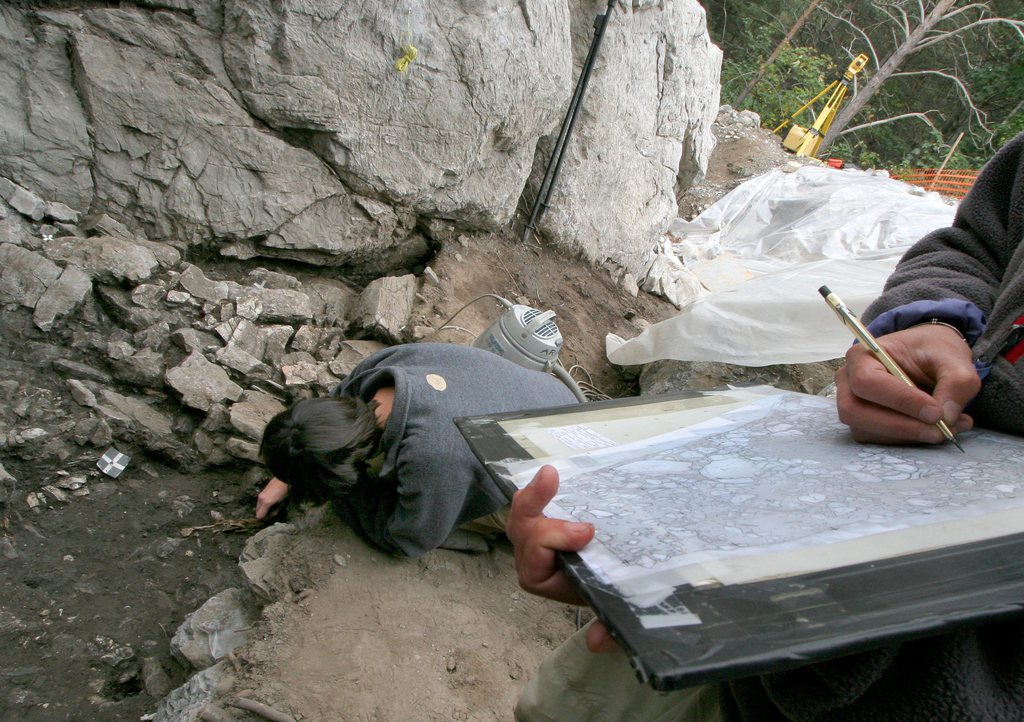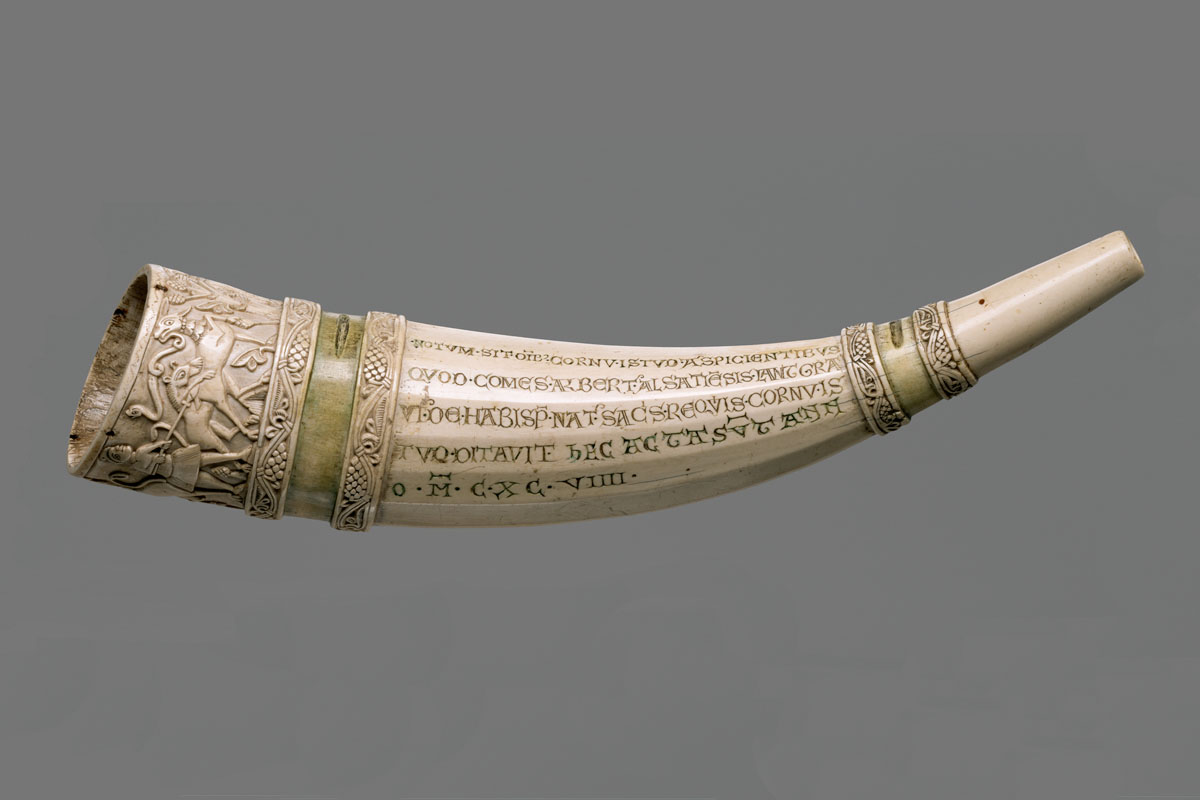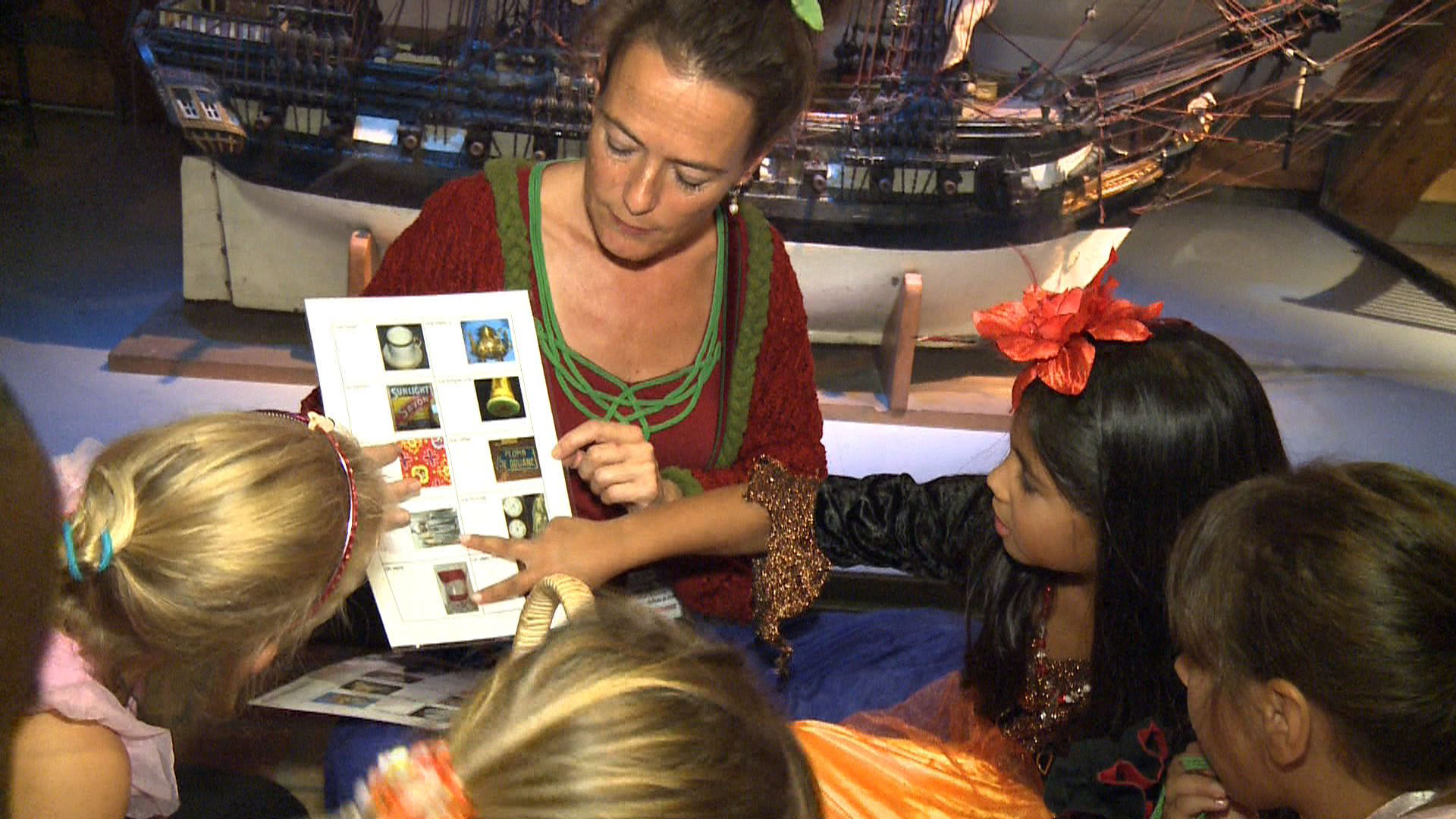Basel museum talks to its visitors

“Is this the first time you’ve been to this museum?” If you’re asked this by a smartly dressed young man or woman when you’re in the Museum der Kulturen Basel it’s not a corny chat-up line, but an invitation to think about different cultures.
Twelve young people, mainly students of ethnology and cultural studies at Basel University, have just been trained as “culture mediators”: the idea is that they should approach visitors, not to provide factual information, but to start a dialogue that can go as deep as the partners care to take it.
It’s an innovative concept. To quote the museum’s own brochure on the subject: “The accent is not on the transfer of knowledge but on an exchange of knowledge”.
“Visitors leave the museum having learnt something new about the cultures of other peoples and about their own.”
Mediator Stephan Simonett – who is reading cultural studies and European ethnology – explained to swissinfo.ch that although he can answer some technical questions, that is not what he is there for.
“Our role is to discuss underlying cultural issues, and not to be a substitute for guided tours.”
“The point is to encourage visitors to think about what they are seeing. People start to ask themselves questions, and ideas develop further through conversation.”
His colleague Livia Wermuth had an example of an encounter with a woman who was looking at an object about which specialists admitted that little was known.
“She said she had some ideas of her own. She made comparisons with what she knew from Switzerland, and from elsewhere.”
Dan Wiener is the communications expert who trained the mediators.
Factual information about the objects is always available, but for him the danger in an ethnographical museum is that visitors see the exhibits as exotic items made by exotic people, and look at them from an “enlightened” European standpoint.
“I think that if you don’t come with a colonial mentality, but rather are open to the world, you will always see your visit as a cultural encounter. You can reflect on the things you do yourself, and get a better understanding of why other people do what they do,” he explained.
Intrinsic Perspectives
The items in the museum are no longer displayed in cases featuring a specific culture. Rather, a small selection is on show, combined in different ways in temporary exhibitions focussing on one particular aspect of anthropology.
“In this way the objects are no longer simply an illustration of the context of the culture they come from, but they become accessible to us in the Here and Now,” says museum director director Anna Schmid.
The new concept is well illustrated in the exhibition Intrinsic Perspectives – Inspiring Aspects of Anthropology.
It looks at the “foundations on which a society functions”, taking four key aspects, which it defines as “agency, knowledge, performance, and space”.
Relatively few items are on display, but they have all been chosen to encourage visitors to think about how and why human beings shape their lives as they do within the constraints of the societies they live in.
The items selected include objects from Switzerland: for example, in the “knowledge” section the notched wooden tallies traditionally used to record the water rights of people living in canton Valais are on display alongside khipu knotted cords once used in Peru to record historic events, a totem pole from Canada into which is carved information about a family, or an ancestor carving from Papua New Guinea which helped preserve the collective memory.
Visitors are invited to think about such issues as who knows what in a society, how knowledge is regarded and how it is passed on.
New ground
Wiener is keen to point out that there is no “right” and “wrong” reaction. He says that trying to place oneself in a particular situation is simply a different way of understanding, that goes deeper than understanding an object from a scholarly point of view. “It’s an extra dimension, and I think it’s wonderful!”
It is not unusual for visitors to art museums to react in a personal way to the pictures and to discuss their reactions with their friends. But it’s not – yet – such an obvious thing to do in an ethnographical museum, so the Museum der Kulturen is breaking new ground by employing the mediators.
They have already discovered that the very act of striking up a conversation with one visitor seems to encourage other visitors to talk to each other about the displays.
But whether the same technique would work in other types of museums is something Schmid cannot say: it’s up to them to think of how it could be adapted, she told swissinfo.ch.
She certainly sees it as a way for the Museum der Kulturen museum to exploit its full potential, which means getting away from the notion that it is simply full of “exotic” items that have nothing to do with us.
The scheme has only just started running, and is naturally being carefully monitored. “People really like being able to exchange ideas, and the conversations often develop into something quite deep. And that’s half the goal,” she said.
“A conversation is never over when it stops. You go on thinking about it. What’s important to us is the continuing impact. We’re never going to be able to measure it, unfortunately, but we know it’s there.”
Feedback
The mediators are reporting back on their encounters, so that the museum can discover what people want and need and adapt its offer in consequence.
“One of the things we’ll be talking about to people is what their expectations are when they come here. It’s all to do with what the role of an ethnographical museum should be today. We’re not there to display exotic objects. Those times are over.”
“What do people find interesting? or exciting? or moving? That’s what we want to know. And that’s something no questionnaire can tell us.”
The Museum der Stadt Basel (Basel City Museum), opened in 1849 – the first purpose-built museum in German-speaking Switzerland – contained among its exhibits some items from ancient America.
It was thus one of the first ethnological collections in Europe to be open to the public.
The collection was initially expanded by wealthy Basel citizens bringing back items from their travels, but as anthropology became the object of more scientific study, various eminent scholars also contributed to it.
A separate ethnographical museum was established in 1917.
It is now one of the major such museums in Europe, with a collection of more than 300,000 objects. It also has a collection of about 50,000 historic photos.
Over the years the museum has changed its name; it has been called “Museum der Kulturen” (Museum of Cultures) since 1996.
The museum has recently been extensively rebuilt, with a new extension designed by the Basel-based architects Herzog & de Meuron, featuring completely new layout and design. After two years of building work, its new premises opened in 2011.
The culture mediators are part of the museum’s Culture Dialogue / Dialogue Culture project.
They not only answer questions, but ask them as well, in order to draw visitors into a deeper cultural discussion.
The museum hopes that this will help visitors deepen their understanding of both their own culture and of others.
It hopes the dialogue culture will attract a new, young audience to the museum.
The project has been supported financially by the Mercator Foundation Switzerland, which describes itself as “committed to a society which is willing to learn and open to the world”.
It has contributed SFr 220,000 to the project.
In the introductory phase the mediators are present every Thursday from 2 p.m. and on Saturdays and Sundays, but later it is planned that they should be there throughout the museum’s opening hours.

In compliance with the JTI standards
More: SWI swissinfo.ch certified by the Journalism Trust Initiative












You can find an overview of ongoing debates with our journalists here . Please join us!
If you want to start a conversation about a topic raised in this article or want to report factual errors, email us at english@swissinfo.ch.